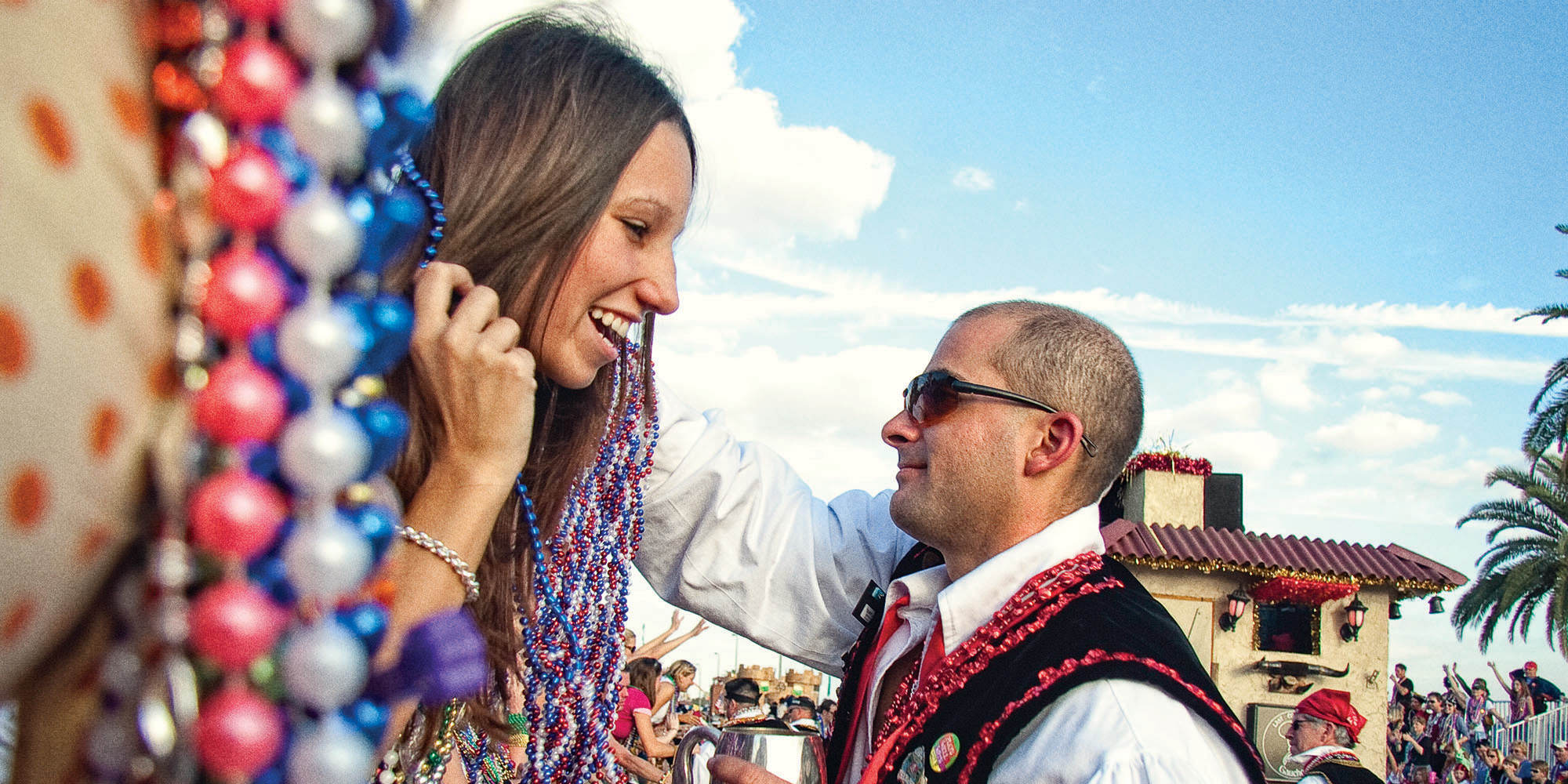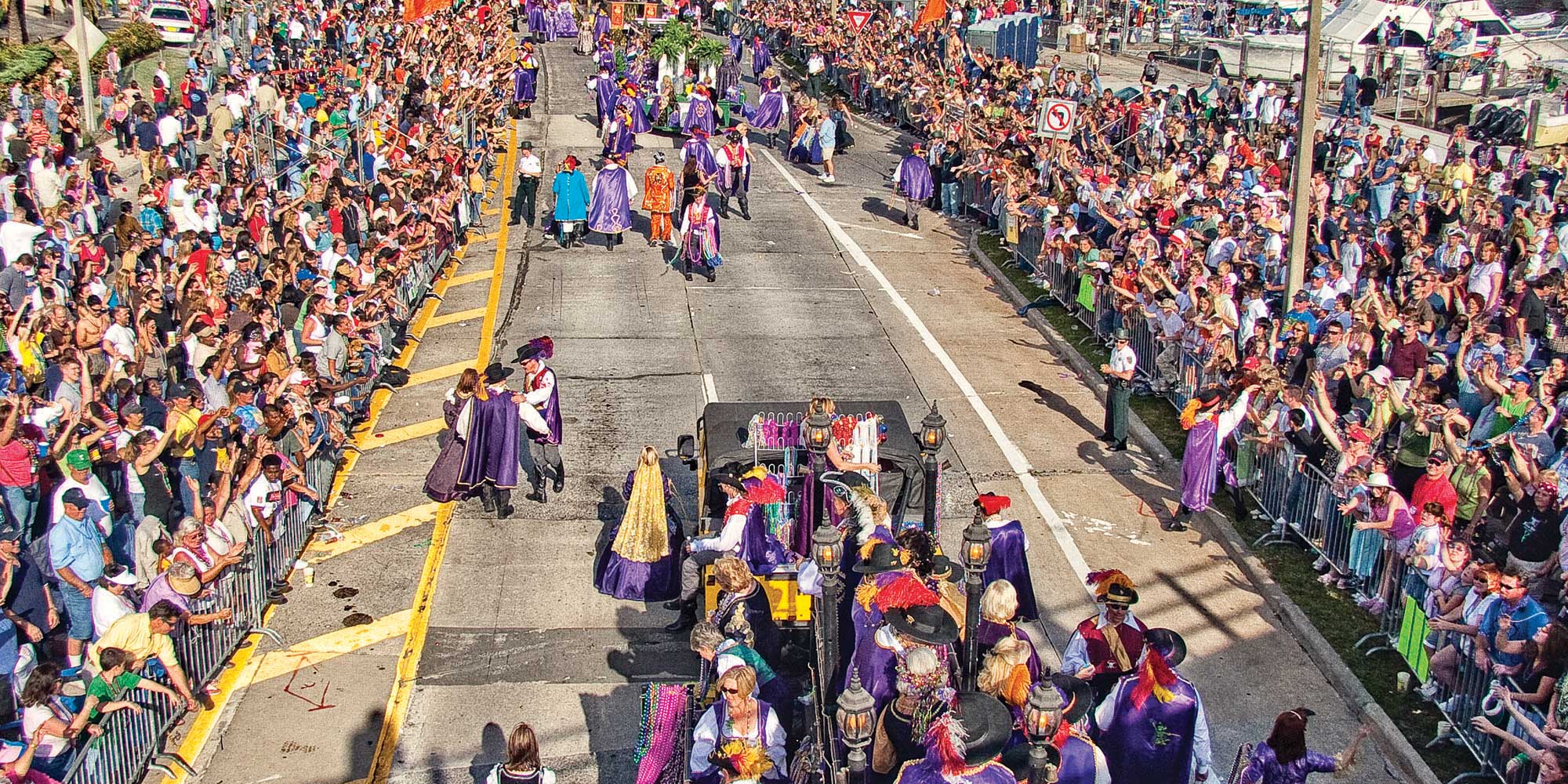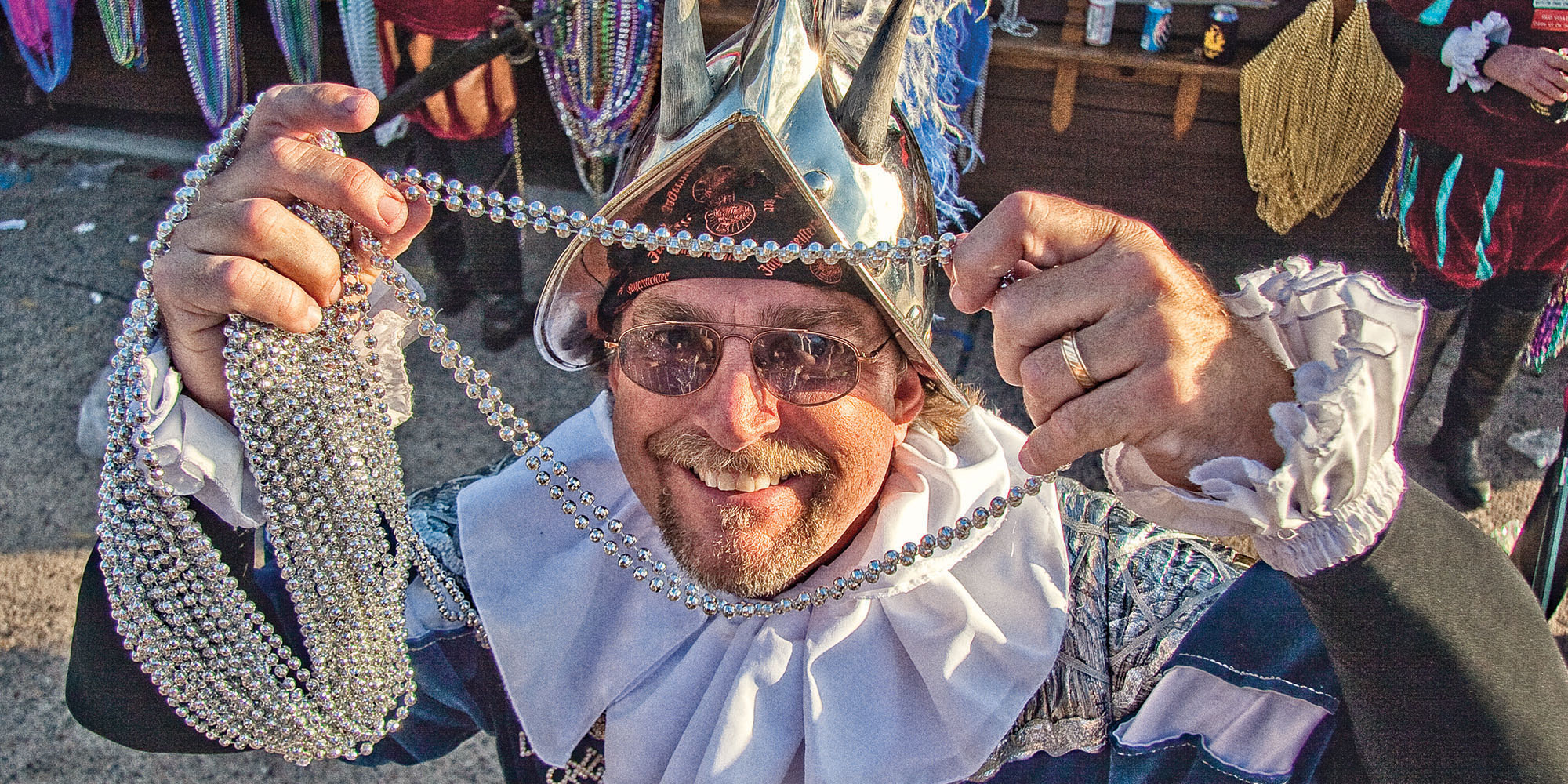Tampa is rife with krewe life. People with common interests gather in these social and philanthropic membership organizations and have a blast along the way. After all, where else do adults have an excuse to go all-out in costume beyond Halloween?
While krewes exist around the country, they are prevalent in Florida, with around 130 krewes running. The krewe scene is especially thriving in Tampa, says Gregg Heggeland, president of the Inter-Krewe Council, which has about 70 krewe members from the Bay area and Panhandle.
“This is such a unique way of creating groups to support the community,” says Heggeland, a member of the 1st U.S. Volunteer Cavalry Regiment — Rough Riders. (The krewe was founded in 1978 to memorialize the accomplishments of the regiment and President Theodore Roosevelt.)

Locally, the public may be most familiar with krewes as the lively groups in themed outfits seen on elaborate floats at Gasparilla’s Parade of Pirates, organized by Ye Mystic Krewe of Gasparilla. (Read about The Making of Gasparilla)
“It really is like being a rock star onstage,” Heggeland says. “You have all these people yelling and screaming for you for beads.”
Gasparilla may be the largest, but it isn’t the only krewe-run parade in town. Other popular productions include the St. Patrick’s Day Parade, put on by the Rough Riders; and a Knight Parade, hosted by the Knights of Sant ‘Yago. But there’s much more to krewe life than throwing throngs of beads to screaming fans. They host numerous socials and fundraisers, raising thousands of dollars for charity.
“These parades are our celebration for what we do throughout the year,” Heggeland says.

The Inter-Krewe Council’s membership is diverse. While commonalities include a costume and theme, charity support and dues collection, they vary vastly within those confines. Ye Mystic Krewe of Gasparilla is the oldest, established in 1904, while some were recently created. Their sizes range from 20 to nearly a thousand members. Some are co-ed, while others are all male or all female. Many accept members year- round, while others have a membership timeframe or are no longer accepting new members. Members may be several-generation participants or the first in their family to participate.
The theme is what really sets a krewe apart. Some are organized by nationality, while others are grouped by common interest (pirates!), profession, history and/ or charity.
Inter-Krewe Council Secretary Karen Burns is a founding member of Sirens of the Golden Sabre, a small, all-female group founded in 2000.

“We attend each other’s events and support each other,” Burns says. “There’s a lot of diversity and inclusion among the different krewes and within each krewe as well.”
Burns and Heggeland implemented the council’s Krewe University a couple of years ago to help krewes navigate insurance, vendors, the pandemic and other topics.
“The goal is to collaborate and share ideas and best practices,” Heggeland says.
Interested in joining a krewe? Heggeland recommends checking out the Inter-Krewe Council’s web directory at interkrewe.com and attending some events to find the best fit. There’s typically an application process and may include a background check, letter of reference/sponsor and probationary period.



